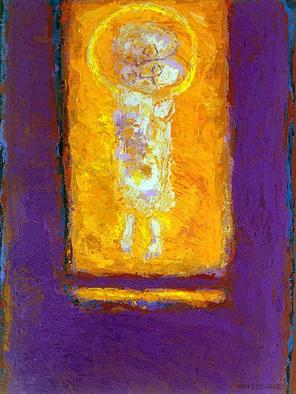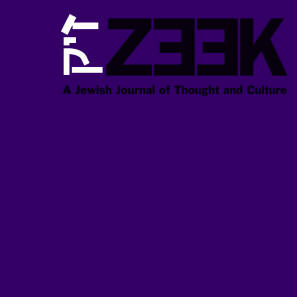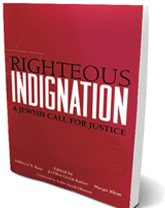 December 07
December 07
Against Mourning
by Anne Goldman
p. 3 of 3
Our feelings for the lost do not require the constant synchronizations that bonds with the living demand, but they are neither straightforward nor impervious to change. Where do we see these complex affiliations mirrored in public buildings? The vertical sweep of Oklahoma City’s memorial and the stony horizontals of New York’s Museum of Jewish Heritage possess an imposing but intractable majesty. Even the colossal wrecks of the pyramids feel more approachable, their vastness reduced to human scale by the paraphernalia of everyday life littered throughout their underground rooms, cooking pots and water containers strewn haphazardly alongside jewelry for the gods. Our modern memorials offer no such invitation. In their cavernous spaces, ordinary tokens of remembrance seem out of place. Those designed as secular are intended to gesture toward inclusion. But without the tempering beneficence of religious purpose, they mark only the bewilderment we feel in the face of acts that defy faith altogether. No presence hovers inside them, only mourning without solace, the grief we hold for the dead we cannot bury.
Even in photographs, the small memorial New York City resident David Cohen improvised for the victims of the September 11 bombing evokes more feeling, to my mind, than the airless magnificence of the larger structures we have consecrated to disaster. His store Chelsea Jeans stands near where the World Trade Center used to be. Rather than clean up the debris, Cohen let the damage stand. The glassed window invites passersby to peer inside at what is essentially a grown-up’s diorama. The date is inscribed in block capitals at the top of the wall; florescent light, warm-looking in the tomb-like room, illuminates racks of t-shirts and jeans. The slate colored shirts are stacked, as Michael Kimmelman wrote in 2002 for the New York Times, like “lined-up headstones.” A fine, blue-grey dust covers them all. The critic sees in these clothes a hint of George Segal’s “preserved” figures. Though artful, this observation seems wrong: Cohen’s store does not presume to display, let alone confront or provoke. It is just a frame for memory; the way the foundation of a house burned to the ground might still retain some feeling of the lives it sheltered. The shop’s quietness resonates with palpable human sorrow. In its tiny space there is ample breathing room for reflection. I stare at the fallen ash, which, like the dust that collects on the surface of a bureau, possesses a softness my fingers yearn to touch.
I crave the restoring intimacy of the personal, the modesty of old Polaroids rather than the masterful images broadcast on television in the days after the September 11 bombing. Disaster does not possess the coherence of art. Loss burns and dissolves detail; departure leaves stupor in its wake. The 9-11 films—the New York skyline bereft of its highest towers; the silhouette of a fireman walking through wreckage; the stately slide of buildings falling to earth with a curious grace—are perverse. I want gesture and voice, the small space and the close angle. A ceramic mug of cold coffee, its white surface stained with the lipstick imprint of a woman’s mouth. A portrait framed by a child’s blurry thumb. A wrinkled shirt still scented by a man’s skin. Bottles. Cobwebs. Rust.
I confess I do not understand the decision to call the austere garden of New York’s Museum of Jewish Heritage a “living memorial.” To me this place seems weighted toward the desolate, open to the air but bereft of oxygen. The heavy rocks have been strewn with the guilelessness of an avalanche. The stunted trees, designed as a tribute to endurance, look threatened rather than coaxed into surviving. There is something false in this “garden,” something stifling in its stark drama inimical to memory’s invitation. Like other American sites dedicated to remembrance of the Shoah, this arid place recalls not only the devastation of the catastrophe but our own distance from it. Because Holocaust memorials in the United States are quite literally out of place here, they do not so much evoke a lost presence as elaborate a central absence. Metaphor without a referent, they must imagine what they mourn.
I bade my troops once encamp upon a town
That enemies had razed in ancient times.
We pitched our tents and slept upon its site,
While under us its former masters slept….
They’ve changed their palaces for sepulchers;
They’ve moved from lovely mansions into dirt.
But should they lift their heads and leave those graves,
How easily they’d overwhelm our troops!”
Never forget, my soul, that one day soon
This mighty host and I will share their doom.- Samuel the Nagid (993-1056)
The sanctification of trauma is our collective misfortune. Let me say here, clearly and calmly, that at this point I believe its ethical consequences are too debilitating to warrant its continued blind persistence. The culture of mourning, which swells in strength as we recede from the Shoah, has become a ritual largely emptied out of genuine feeling. Outcry ensues each time someone begins to question its repetition, but have we not been raised to put equal faith in the spirit of inquiry? When does memorial supplant rather than supplement memory? What does it mean to “remember” a disaster, and what are the consequences for future generations of doing so in perpetuity? At the opening of the twenty-first century, the rationales we offer to stay judgment turn to excuse. We have grown up assuming our study of disaster will remind and so ward off the worst consequences of racial hatred, but a half-century of renewed genocide only provides evidence of the devastation “ethnic cleansing” continues to inflict around the globe. We have made the Shoah exemplary, insisting upon its singularity of magnitude, but when other atrocities are overshadowed by its reach and scale we create a moral dilemma that obliterates the satisfaction of our own accuracy. And surely Primo Levi’s insistence on mourning the individual rather than the mass underscores the perversity of using a comparative scale to “weigh” acts of torture and genocide. The Holocaust is the supernova of catastrophes; dazzled by its afterimage, we are blind to the tragedies that unfold in front of us. The word itself has become an unyielding monument, imperious in its drawing power. Black hole of loss, it absorbs everything into itself.
 As a term of practical value in political negotiation (need it be said?), the Holocaust has lost its efficacy. Its invocation in the current Middle East conflict is corrosive: Jews cannot help but wince at the cynicism of ultranationalist anti-Semitic groups who mock its use, while others are quicker to understand its rhetoric as inflationary rather than a history lesson designed to defuse. And while anti-Semitism has thankfully not since the close of WWII developed into genocide, the call to restore the broken world that is one of Judaism’s most inspiriting tenets compels us to treat any act of ethnic loathing as if our own survival were at stake.
As a term of practical value in political negotiation (need it be said?), the Holocaust has lost its efficacy. Its invocation in the current Middle East conflict is corrosive: Jews cannot help but wince at the cynicism of ultranationalist anti-Semitic groups who mock its use, while others are quicker to understand its rhetoric as inflationary rather than a history lesson designed to defuse. And while anti-Semitism has thankfully not since the close of WWII developed into genocide, the call to restore the broken world that is one of Judaism’s most inspiriting tenets compels us to treat any act of ethnic loathing as if our own survival were at stake.
Though it spawn concert and anniversary exhibition and even, as at the National Memorial in Oklahoma City, sell t-shirts, we must not participate in the commercialization of disaster. Instead, we must pry loose our hold on the assumption of perpetual adversity. Surely the habit of refusal such divisiveness encourages is not a posture we want our children to maintain. We need to recognize that continual efforts to call attention to the Holocaust as if it were a singular exception to an all-too common fate carry with them the very ethnocentrism we have been at pains to indict. It is a kind of arrogance in any people to cherish the evidence of its own troubles as distinctive, above and beyond the prosaic difficulties that others face. There must be many standing in the long shadow of Holocaust memorials who feel their own past has been consigned to oblivion. Allowing ourselves to be swept away in the grandly isolating mode of tragedy possesses a certain appeal. But if we begin by assuming mistreatment or contempt, we make the work of keeping an open heart that much more difficult.
If we wish to continue building such memorials, let us do so with more generosity and openness, with an attitude of receptiveness and some humility. Make them provisional rather than permanent—moments of silence for the dead rather than a perpetual mourning that inevitably deteriorates into self-pity. Temper them with the acknowledgement that suffering is not a commodity of scarcity anywhere on earth. Install them so that they encourage an attitude that is genuinely self-critical as well as censorious of the wrongs others have committed. And finally, place them alongside the memorial-graves of others so that we when we repeat those incantatory phrases of promise and pain we speak them in the accent of the poet a thousand-years dead who did not forget, in a moment of victory, to chant Kaddish for all of the dead.
Anne Goldman teaches English and Jewish Studies at Sonoma State University. Her writing has appeared in the Georgia Review and is forthcoming in the Southwest Review and the Michigan Quarterly Review.










